Precision Slitters for Nonwoven Fabrics
Featured Nonwoven Fabrics Slitter Rewinder Machines
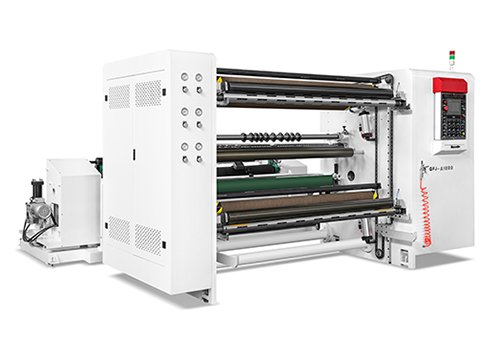
QFJ-A400 Horizontal High Speed Slitting Machine
- Key Specifications:
- Max Speed: 400m/min
- Min. Slitting Width: 30mm
- Unwinding Diameter 1200mm(Customizable)
- Rewinding Diameter 1000mm(Customizable)
- Key Specifications:
- Automatic unloading by chain
- Independent shaft free feeding

QFJ-A500 Horizontal High Speed Slitting Machine
- Key Specifications:
- Max Speed: 500m/min
- Min. Slitting Width: 20mm
- Unwinding Diameter 800mm(Customizable)
- Rewinding Diameter 600mm(Customizable)
- Key Specifications:
- Small Footprint of connected structures
- 4 Sets Servo Motor Controll
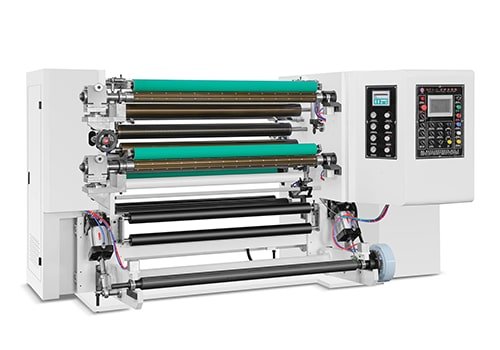
QFJ-B200 Vertical Slitting Machine
- Key Specifications:
- Max Speed: 200m/min
- Min. Slitting Width: 20mm
- Unwinding Diameter 700mm(Customizable)
- Rewinding Diameter 400mm(Customizable)
- Key Specifications:
- Small Footprint of connected structures
- 4 Sets Servo Motor Controll
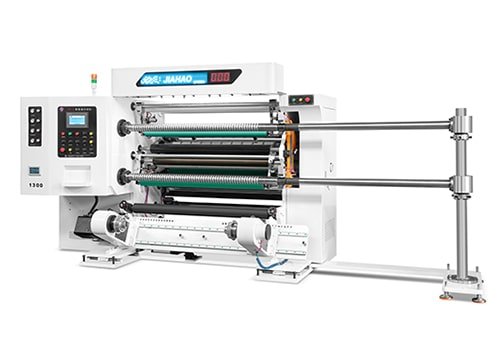
QFJ-B500 Vertical High Speed Slitting Machine
- Key Specifications:
- Max Speed: 500m/min
- Min. Slitting Width: 30mm
- Unwinding Diameter 750mm(Customizable)
- Rewinding Diameter 450mm(Customizable)
- Key Specifications:
- Automatic unloading by chain
- Independent shaft free feeding
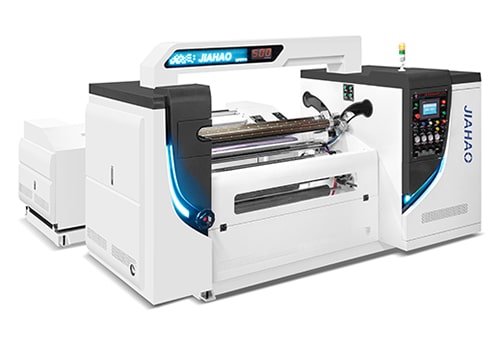
QFJ-C500 Surface Winding High Speed Slitting Machine
- Key Specifications:
- Max Speed: 500m/min
- Min. Slitting Width: 20mm
- Unwinding Diameter 1000mm(Customizable)
- Rewinding Diameter 600mm(Customizable)
- Key Specifications:
- Small Footprint of connected structures
- 4 Sets Servo Motor Controll
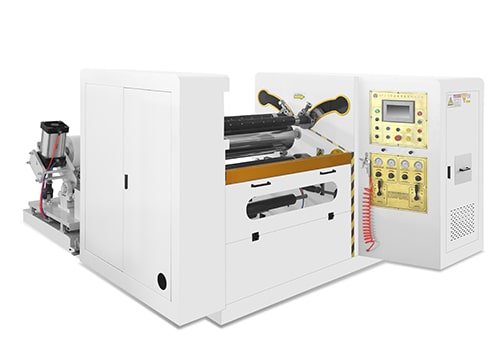
QFJ-C200 Series Surface Winding Slitting Machine
- Key Specifications:
- Max Speed: 200m/min
- Min. Slitting Width: 10mm
- Unwinding Diameter 1000mm(Customizable)
- Rewinding Diameter 600mm(Customizable)
- Key Specifications:
- Small Footprint of connected structures
- 4 Sets Servo Motor Controll
Specialized Nonwoven Slitters Applications
Hygiene & Medical Products
Slitting machines for spunbond and SMS nonwovens—ideal for diapers, sanitary pads, gowns, and masks. Provide lint-free cuts with cleanroom-ready precision.
Wipes & Cosmetic Pad Production
Ideal for spunlace and other soft nonwovens, our machines handle wet wipes, facial pads, industrial wipes, and cotton discs with adjustable slitting widths and optional perforation systems.
Filtration & Insulation Materials
We offer high-precision slitting solutions for meltblown, spunbond, and composite nonwovens used in air, water, and HVAC filters, as well as acoustic and thermal insulation layers.
Technical & Industrial Nonwovens
Our heavy-duty slitter rewinders process geotextiles, automotive liners, roofing membranes, and agro-textiles made from needlepunched and spunbond nonwovens.
Precision Slitting for Nonwoven Materials
From Roll to Finish: Inside the Nonwoven Slitting Workflow
1. Stable Shaftless Unwinding
2. Effective Web Conditioning
3. Versatile Slitting Options
4. Clean Trim Removal
5. Controlled Rewinding

Turning Your Nonwoven Challenges into Smart Slitting Solutions
Minimize Waste and Fiber Contamination
Shear, crush, or hot knife cutting paired with spreader rollers and anti-static bars ensures clean cuts and reduced fiber shedding.
Prevent Telescoping and Roll Deformation
Center-surface or differential rewinders deliver stable roll tension, avoiding telescoping and crushed edges across soft materials.
Precision Sheet Cutting and Bag Production
Roll-to-sheet cutters with stacking and bag-making lines with handle and print options support full nonwoven product workflows.
Handle Diverse Nonwoven Grades with Ease
Custom setups for spunbond, meltblown, spunlace, and needle-punched fabrics ensure application-specific slitting precision.
Reduce Downtime with Easy Maintenance
Modular machine frames, tool-free access points, and user-friendly controls make routine maintenance faster—minimizing unplanned downtime.
Customized Nonwoven Slitting Solutions
What We Customize:
Machine Configuration
Tailored frames, unwind/rewind systems, and web paths optimized for bulky, elastic, or delicate nonwoven fabrics.
Slitting System
Shear, crush, or hot knife modules selected based on fabric thickness, fiber type, and dust/lint requirements.
Rewinding Options
Center, surface, or differential rewind setups—ideal for preventing telescoping and preserving roll shape and density.
Web Width & Roll Diameter
Supports fabric widths from 600 mm to 2500 mm and roll diameters up to 1500 mm for high-output lines.
Accessories & Spare Parts
Nonwoven-grade blades, anti-static bars, fiber collection systems, and tension sensors for stable, reliable operation.
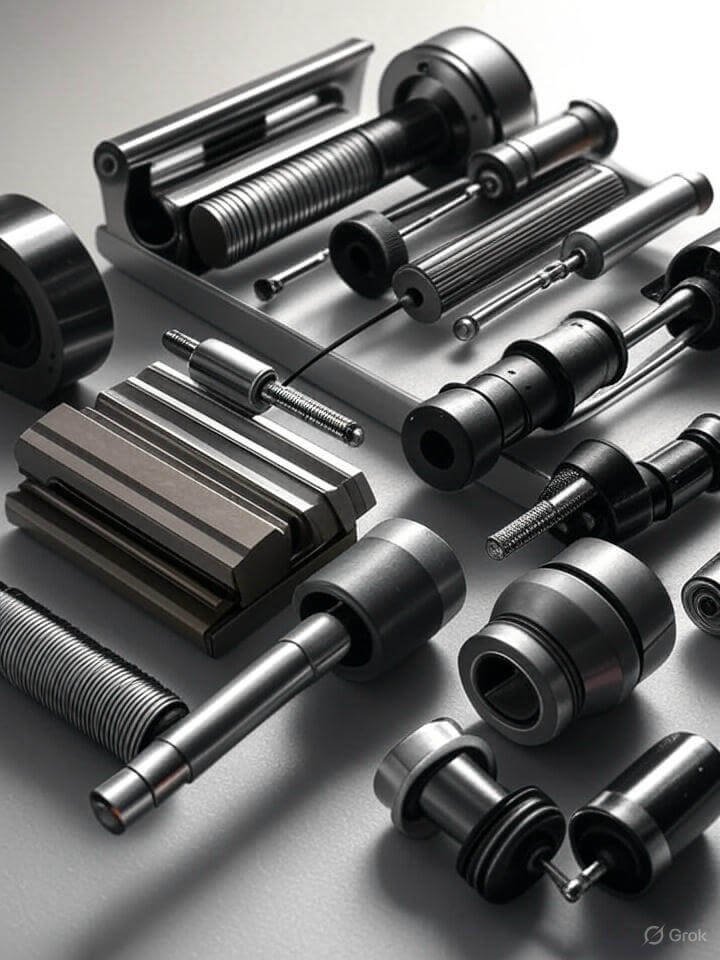
Our Manufacturing Prowess & R&D Capabilities
Production Scale & Qualifications
- Factory Area: Over 10,000 square meters dedicated to manufacturing high-precision slitters.
- Annual Capacity: 200+ high-quality slitting machines for various materials.
- Certifications: ISO 9001, CE, Multiple Patents for advanced slitting technology.
R&D and Innovation
- Dedicated R&D Team: 12+ experienced engineers focused on slitter machine innovation.
- Technical Collaborations: Partnering with leading universities and research institutes for cutting-edge slitting solutions.
- Innovation Focus: Continuous development of intelligent and automated slitting and rewinding machines for paper, film, and foil.
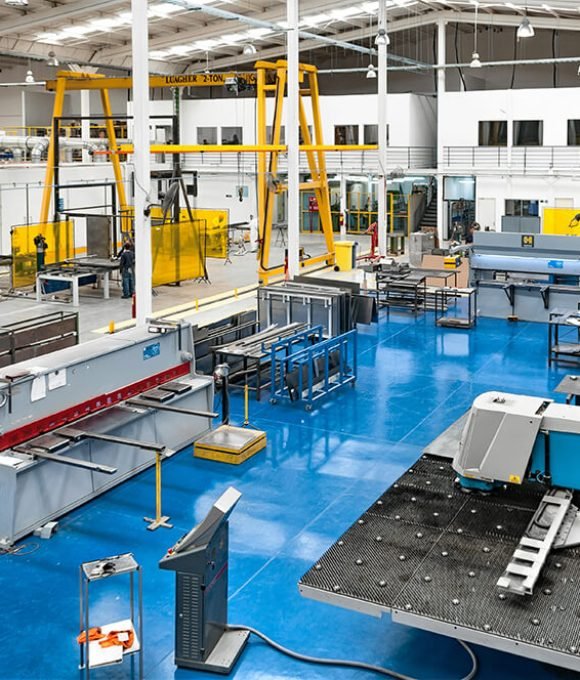
Quality Certifications
- ISO 9001:2015 Quality Management System
- CE Certification for European Market Compliance
- SGS Audited Supplier Status for all our slitting and rewinding machines.
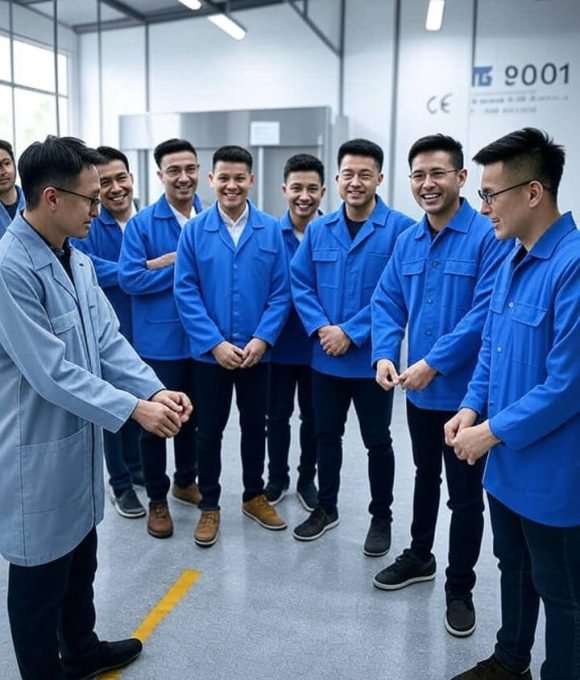
Unmatched After-Sales Service & Support
We have a growing network of overseas service points and authorized agents in Southeast Asia, Europe, and the Americas to ensure prompt local support for your slitting and rewinding machine.
Our Service Commitments
- 24/7 remote technical support and troubleshooting for your slitter.
- Scheduled preventive maintenance programs and on-site servicing for all slitting machines.
- Comprehensive operator training and detailed maintenance guides (e.g., slitter slider lubrication, film slitter knife care).
12+
Years of Experience
500+
Customer Cases
20+
Patented Technologies
98%
Customer Satisfaction
Industries That Rely on Nonwoven Fabric Slitting Machines

Hygiene & Medical Products
Slitting solutions for diapers, sanitary pads, and medical drapes. Ensure clean cuts, minimal fraying, and contamination-free processing for sensitive skin contact applications.

Geotextiles & Construction
Heavy-duty slitters for erosion control fabrics, drainage mats, and roofing underlayments. Deliver consistent width tolerance and robust tension control for field durability.

Filtration Media
Precision slitting of HVAC, HEPA, and liquid filter media. Maintain fiber integrity and edge uniformity to prevent bypass and ensure filtration efficiency.

Wipes Converting
High-speed slitting for wet/dry wipes, disinfectants, and industrial rolls. Support lint-free edges, tension-sensitive unwinds, and narrow-width slitting for pocket packaging.

Automotive Interiors
Slitting systems for trunk liners, headliners, and acoustic insulation. Ensure precise width control and scratch-free surfaces for luxury OEM standards.

Protective Apparel
Cleanroom-ready slitting of SMS, meltblown, and laminated fabrics for medical gowns and PPE. Minimize fiber shedding while preserving barrier properties.

Agriculture & Crop Covers
Weather-resistant slitters for weed barriers, plant protection fabrics, and hydroponic substrates. Optimize edge retention for UV and chemical exposure.

Furniture & Bedding
Dust-minimizing slitting for mattress quiltings, pillow wraps, and upholstery interliners. Ensure soft edges and consistent roll density for automated production lines.
A Real-World Success Story: Minh’s Transformation with DJH Machinery
To demonstrate how our Nonwoven Fabric Slitting Machine (Model NWSL-1600) delivers real-world value, we’d like to share the journey of Mr. Minh, a textile entrepreneur from Vietnam who redefined his company’s future with the help of DJH Machinery.
From Production Bottlenecks to Scalable Solutions
When we first connected with Minh in late 2020, his business was facing serious challenges. Operating a family-run nonwoven production workshop in Bình Dương Province, Minh was supplying PP spunbond rolls for hygiene products and medical-grade masks—a market that had surged during the pandemic.
Despite the rising demand, Minh’s slitting operations were becoming a bottleneck. His team relied on outdated mechanical slitters that required manual knife adjustment, lacked tension control, and produced inconsistent edge quality. Frequent downtime and roll waste were cutting into profit margins.
He knew it was time for a change.
Online Collaboration: Trust Across Distance
Due to COVID-19 travel restrictions, Minh couldn’t visit us in person. Instead, we arranged a live video demonstration of our NWSL-1600 Nonwoven Slitting Line, showing the machine handling 1600mm-wide spunbond rolls at a consistent speed of 250m/min with high slit precision.
Key features we highlighted included:
- Automatic knife positioning for quick size changeovers
- Independent servo tension control
- Ultrasonic edge guiding for perfect winding alignment
- Integrated static eliminator for cleanroom-grade output
Even through the screen, Minh could see the machine’s stability and precision. He was particularly impressed by the clean edges and smooth winding finish—crucial for medical nonwovens.
Customization and Delivery
Minh shared his unique production setup: a narrow workshop with limited access space, and strict hygiene compliance for mask-grade materials. Our engineers worked with him remotely to redesign the machine frame, incorporating a compact footprint, enclosed cover panels, and a dust extraction system.
Despite global logistics delays in 2021, we managed to ship and install the machine within 60 days, thanks to our local partner in Ho Chi Minh City who coordinated site preparation and after-sales support.
Results That Speak for Themselves
After commissioning the NWSL-1600, Minh’s company—NamHoa Nonwovens Co., Ltd.—achieved a 40% increase in output capacity and reduced roll waste by over 20%. The automation features enabled his team to handle three times the daily order volume with fewer operators and minimal training.
By mid-2022, NamHoa had secured contracts with two leading Vietnamese PPE exporters, thanks to the consistent slit width and cleanliness of their rolls.
Growing Together: A Partnership Built on Innovation
Minh has since added a second slitting line from DJH to keep up with export orders to Malaysia and Thailand. We continue to support his expansion with remote diagnostics, operator training videos, and spare parts service through our regional agent.
What started as a machinery upgrade has evolved into a collaborative journey—driven by a shared focus on quality, innovation, and reliability.
Minh’s Words
“I was nervous about investing during uncertain times, but DJH treated me like a long-term partner from day one. The machine delivered exactly what I needed—and more. We’re ready to expand confidently.”
What types of nonwoven fabrics can your slitting machines handle?
Which cutting methods are available for nonwoven slitting?
How do you ensure consistent roll tightness during rewinding?
Can your slitting machine process bulky or elastic nonwovens without damaging them?
What’s the maximum roll width and slitting speed your machines support?
Do you offer customization for specific nonwoven applications?
Is your slitting equipment compatible with cleanroom production environments?
Complete Guide to Choosing a Slitter for Nonwoven Fabrics
Slitters for nonwoven fabrics are essential equipment for industries like hygiene products, medical materials, agriculture, and filtration. These machines precisely cut wide nonwoven rolls into narrower widths suitable for further converting or packaging. Choosing the right nonwoven slitting machine ensures smooth operation, optimal fabric handling, and improved product quality. This guide outlines all critical factors to help you make an informed purchasing decision.
1. Identifying Your Production Needs
Understanding your operational demands is the first step in selecting a slitter tailored to nonwoven applications. Consider the following:
- Material Type: Determine the nonwoven fabric characteristics—such as SMS, spunbond, meltblown, or composite structures. Each behaves differently during slitting.
- Roll Dimensions: Know your maximum roll width, diameter, and weight. Most nonwoven slitters handle widths from 1600 mm to 3200 mm.
- Slit Width & Accuracy: Define the range of final widths and required tolerances. Precision slitting helps reduce material waste and maintain uniform product lines.
- End-Use Application: Hygiene-grade slitting may require antistatic features, while filtration fabrics may demand dust-free cutting and edge sealing.
2. Evaluating Machine Capabilities
The performance of your nonwoven slitter affects productivity, maintenance, and output quality. Evaluate key features such as:
- Slitting Mechanism: Rotary shear and score slitting are commonly used. Choose based on material thickness and desired edge quality.
- Tension & Web Control: Tension-sensitive materials like spunlace or meltblown require advanced closed-loop tension systems and edge guiding sensors.
- Speed & Stability: For high-throughput applications, ensure the machine maintains consistent slitting at speeds of 200–500 m/min without web flutter.
- Automation Features: Options like automatic knife positioning, PLC touchscreens, and recipe storage reduce downtime and operator error.
3. Choosing a Reliable Supplier
Beyond the machine, the supplier you choose will shape your long-term success. Look for:
- Industry Experience: Suppliers with a strong presence in the nonwoven sector understand the material’s unique behavior and challenges.
- After-Sales Support: Verify if they provide remote support, spare parts, maintenance guidance, and local service agents in your region (e.g., Vietnam).
- Customization Options: The best suppliers can tailor machine layouts or features to match your exact production environment.
- Successful Installations: Request case studies or references, ideally with clients in similar industries or markets.
4. Cost Analysis and ROI
Cost-effectiveness involves more than the machine’s price tag. A comprehensive cost evaluation should include:
- Initial Price: Advanced automation or high-speed models may have a higher upfront cost but deliver faster ROI through labor savings.
- Operating Expenses: Include blade wear, power usage, compressed air consumption, and downtime for maintenance.
- Waste Reduction: Machines that minimize web breaks and edge defects significantly improve material utilization.
- Longevity & Upgradeability: Investing in durable construction and modular design helps future-proof your line as production needs grow.
5. Additional Considerations
Ensure your chosen slitter supports operational safety, compliance, and integration:
- Operator Safety: Look for safety enclosures, interlock systems, and clear emergency stop functions.
- Cleanroom Compatibility: For medical or hygiene-grade production, check whether the machine meets cleanliness and static control standards.
- Line Integration: Ensure compatibility with upstream unwinding or downstream packaging systems.
- Local Compliance: Confirm voltage, certification, and layout meet Vietnam’s industrial and regulatory standards.
6. Industry Trends and Future Outlook
The nonwoven fabric industry is evolving rapidly with shifts in demand and technology:
- Hygiene & Medical Demand: Post-pandemic demand continues for high-speed, hygienic slitting lines for face masks, wipes, and gowns.
- Sustainability Focus: Machines that reduce waste, energy use, and downtime support eco-friendly production goals.
- Automation Adoption: Smart sensors, real-time diagnostics, and predictive maintenance features are increasingly standard.
- Asian Market Growth: Southeast Asia, particularly Vietnam, is emerging as a key production hub for hygiene nonwovens and filtration media.
Key Consideration Comparison Table
| Factor | Key Considerations | Importance |
|---|---|---|
| Production Needs | Fabric type, roll specs, slitting precision | Ensures machine matches material characteristics |
| Machine Capabilities | Slitting method, tension control, automation | Affects slitting quality, speed, and uptime |
| Supplier Evaluation | Experience, support, customization, local presence | Impacts service quality and future scalability |
| Cost Analysis | Price, energy use, durability, waste rates | Determines long-term operating efficiency |
| Extra Factors | Safety, certification, integration compatibility | Supports compliance and smooth operations |
Selecting the right slitter for nonwoven fabrics is a strategic investment that requires a clear understanding of your material, output goals, and market demands. By focusing on machine performance, supplier reliability, cost-efficiency, and industry trends, you can optimize your production for long-term success—especially in fast-growing markets like Vietnam. Choose wisely, and your slitting line will become a pillar of consistent quality and operational growth.
